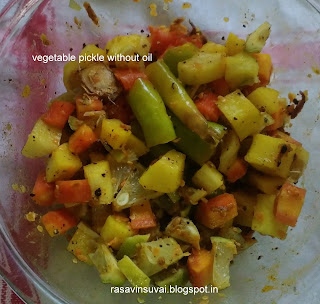When you are bored of eating the same stuff for a long time, a change is always better. Here is a chutney powder with moongdal instead of the thogayal form.
As I was having only a quarter cup of moongdal left in the bottle, and want something spicy along with the dal rice, I tried this chutney powder and was liked by me colleagues too for lunch.
It is a simple preparation within a short span of time provided you have the items with you.
Let us look at the recipe now:
As I was having only a quarter cup of moongdal left in the bottle, and want something spicy along with the dal rice, I tried this chutney powder and was liked by me colleagues too for lunch.
It is a simple preparation within a short span of time provided you have the items with you.
Let us look at the recipe now:



















